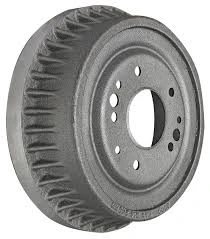Causes and Solutions for Rear Drum Brakes Shuddering in Vehicles
Understanding Rear Drum Brakes Shudder Causes and Solutions
Rear drum brakes are a common feature in many vehicles, especially in older models and certain heavy-duty applications. While they provide effective stopping power, one issue that drivers may encounter is a phenomenon known as brake shudder. This uncomfortable feeling can be disconcerting and may indicate underlying problems with the braking system. Understanding the causes of rear drum brakes shudder and the steps to remedy it can help ensure a safer driving experience.
What is Brake Shudder?
Brake shudder refers to the vibration or shaking that occurs when the brakes are applied. This can manifest as a jarring sensation felt through the brake pedal, steering wheel, or entire vehicle. The severity of shuddering can vary, but it is often most noticeable during slow-speed stops or when the brakes are engaged firmly.
Causes of Shudder in Rear Drum Brakes
1. Warped Brake Drums One of the most common causes of shudder in rear drum brakes is a warped brake drum. Over time, exposure to high temperatures can cause the drum to deform, leading to uneven contact between the brake shoes and the drum surface. This unevenness results in vibrations during braking.
2. Worn Brake Shoes If the brake shoes are excessively worn or unevenly seated, they may not make consistent contact with the drum. This can lead to a pulsating effect, contributing to the shudder when the brakes are applied.
3. Debris in the Brake Assembly Accumulated dirt, dust, and debris inside the brake drum can also result in brake shudder. These contaminants can interfere with the smooth operation of the brake shoes, causing them to engage unevenly.
4. Poorly Adjusted Brake Shoes Drum brakes require proper adjustment to function effectively. If the brake shoes are not adjusted correctly, they may not engage with the drum evenly, leading to shuddering.
rear drum brakes shudder

5. Moisture and Contamination The presence of moisture or oily substances can create a slippery surface that prevents the brake shoes from making proper contact with the drum. This can be particularly problematic after driving through rain or when the brake components have not been maintained properly.
Solutions to Brake Shudder
To address shuddering in rear drum brakes, several steps can be taken
- Inspection and Maintenance Regular inspections of the brake system can help identify issues before they escalate. Look for signs of wear on the brake shoes and check the condition of the drums.
- Resurfacing or Replacing Drums If the brake drum is warped, it may be possible to have it resurfaced. In cases of severe damage, replacement is necessary to restore proper function.
- Brake Adjustment Ensure that the brake shoes are adjusted correctly to provide even engagement with the drum.
- Cleaning Remove debris and contaminants from the brake assembly to ensure smooth operation.
In conclusion, rear drum brake shudder can stem from various issues, including warped drums, worn shoes, and debris. By understanding the causes and taking proactive maintenance steps, drivers can enhance the performance and safety of their vehicles, ensuring a smoother and more reliable braking experience.
-
The Power and Reliability of Brake DrumsNewsAug.27,2025
-
The High-Quality Truck Brake DrumsNewsAug.27,2025
-
Quality Brake Drums for Reliable PerformanceNewsAug.27,2025
-
Get the Quality Semi Trailer Brake Drums for Your FleetNewsAug.27,2025
-
Everything You Need to Know About Brake DrumsNewsAug.27,2025
-
Enhance Your Vehicle's Performance with Reliable Brake DrumsNewsAug.27,2025
-
Truck Drum Brake Spring Replacement ProcedureNewsAug.22,2025


